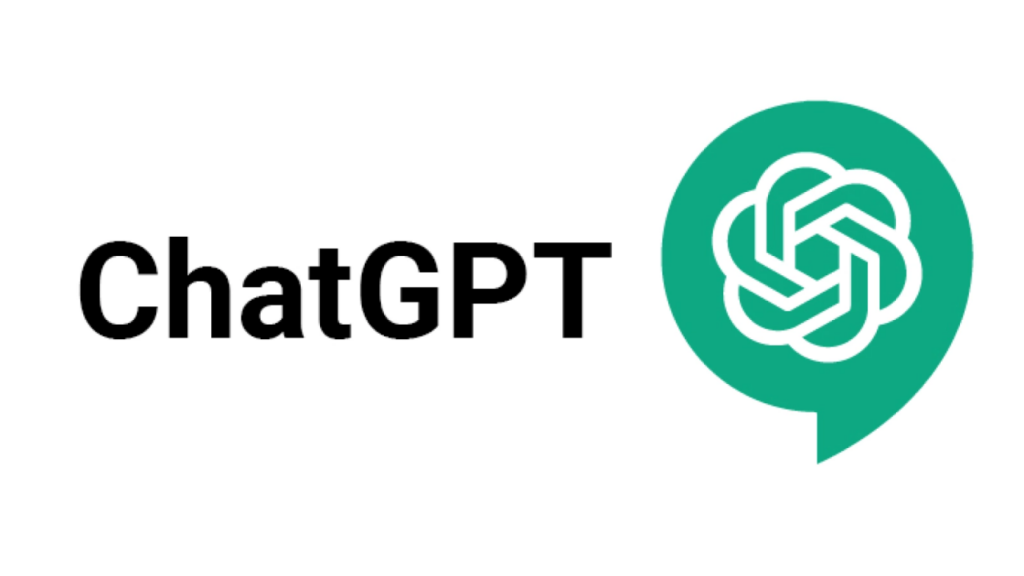In an age where information flows faster than thought, artificial intelligence has become more than a buzzword—it’s a revolution. For students and researchers, AI is not merely a futuristic concept; it’s a daily companion that can think, analyze, summarize, visualize, and even create. The classroom has expanded beyond four walls, and the lab is no longer confined to microscopes and notebooks. Today, the greatest tools of learning are powered by algorithms and neural networks.
AI has transformed how knowledge is gathered, interpreted, and shared. It helps students grasp complex ideas, assists researchers in organizing data, and inspires creativity in every field—from literature to physics, from art to genetics. What once required days of effort can now be achieved in minutes, thanks to a new generation of AI-powered applications.
Yet, with hundreds of AI tools available, choosing the right ones can feel overwhelming. The key is to find tools that are not only powerful but also free, reliable, and designed with academic and scientific precision. Here are ten of the best free AI tools that empower learners, thinkers, and innovators to push the boundaries of human knowledge.
1. ChatGPT – Your Intelligent Research and Writing Assistant
ChatGPT has become the symbol of AI’s leap into the human world. Developed by OpenAI, it’s more than just a chatbot—it’s a full-fledged digital companion for students and researchers.
Imagine a tool that can help you brainstorm ideas for a thesis, explain quantum physics in simple language, write a literature review, generate code, or draft an entire paper outline. ChatGPT does all this with remarkable fluency. It understands context, follows instructions, and even mimics different writing tones—formal for academic work, engaging for essays, or simple for learning.
For students, it can serve as a 24/7 tutor—helping with problem-solving, grammar correction, and test preparation. For researchers, it can analyze data trends, summarize journal articles, and suggest potential hypotheses.
Its free version offers extensive functionality, while the paid plans unlock deeper reasoning and real-time web access. But even without upgrades, ChatGPT remains one of the most transformative free tools in the academic world.
At its heart, it’s not just a machine—it’s a guide through the vast sea of human knowledge, always ready to help you understand, write, and create.
2. Google Bard (Gemini) – The Research Companion That Thinks Broadly
Google Bard—now integrated into Google’s Gemini platform—represents the power of AI backed by the world’s largest information engine. While ChatGPT excels at creativity and conversation, Bard’s strength lies in its connection to real-time information.
For students and researchers, this means instant access to the latest studies, verified data, and up-to-date statistics. Whether you’re researching renewable energy trends, recent advances in genetics, or social behavior analytics, Bard helps you collect, interpret, and present facts quickly.
It integrates seamlessly with Google’s ecosystem—Docs, Drive, and Scholar—making it ideal for collaborative academic projects. Ask Bard to generate summaries of academic papers, outline project ideas, or translate scientific concepts into plain English. It can even suggest credible sources for citation.
The free access provided by Google ensures that Bard remains one of the most powerful AI resources for lifelong learners. With its reasoning ability, data connection, and clean interface, it empowers users to go beyond reading information—to understanding it deeply.
3. Semantic Scholar – The AI-Powered Academic Search Engine
In a world flooded with research papers, finding relevant, credible, and recent literature is often the hardest task. Semantic Scholar changes that. Developed by the Allen Institute for AI, it’s an AI-powered academic search engine designed to make scientific research faster and smarter.
Unlike traditional databases, Semantic Scholar doesn’t just search by keywords—it understands context. If you type “machine learning in cancer detection,” it identifies the most relevant and influential papers, filters out noise, and ranks studies based on significance and citations.
Its AI engine also extracts key information such as methods, results, and connections between studies. It can summarize abstracts, highlight frequently cited papers, and even show how research topics evolve over time.
For students working on assignments, it’s a gateway to credible sources. For researchers, it’s an invaluable map of the scientific landscape—revealing who’s working on what, where the field is headed, and what gaps remain to be explored.
Semantic Scholar is entirely free and covers fields from biology to computer science, psychology to engineering. It’s not just a search tool—it’s an intelligent navigator of academic knowledge.
4. Elicit – The AI Research Assistant for Systematic Reviews
Elicit is designed for one specific and essential purpose: to make research discovery and review effortless. Developed by the team at Ought, Elicit uses large language models to help researchers automate parts of the literature review process.
Type in a research question—say, “What are the effects of meditation on stress reduction?”—and Elicit will find relevant academic papers, summarize their findings, and extract important variables such as sample size, methods, and outcomes.
What makes Elicit unique is that it doesn’t just show results—it helps organize them. You can compare studies side by side, filter by criteria, and even identify patterns across dozens of papers.
For students writing dissertations or literature reviews, Elicit can save days of manual searching. For researchers designing new experiments, it provides a quick overview of existing work, helping to avoid duplication and focus on innovation.
Elicit’s mission is to make scientific reasoning scalable—giving every researcher, regardless of experience, the power to think critically and systematically. And the best part? It’s completely free.
5. Research Rabbit – The Spotify of Academic Research
Research Rabbit is often described as “Spotify for researchers,” and rightly so. It visualizes research in a way that feels alive, dynamic, and inspiring.
Instead of simply listing papers, Research Rabbit creates interactive maps showing how studies, authors, and topics are interconnected. You can follow the “story” of a research field, tracing how ideas evolve over time and discovering papers you might have missed through traditional searches.
When you find an interesting paper, the AI recommends related studies—just like a music playlist that keeps surprising you with new songs. This makes it perfect for exploring emerging fields, interdisciplinary topics, or unfamiliar research areas.
Students can use it to build annotated bibliographies, track citations, and visualize how one discovery leads to another. For researchers, it’s a brilliant way to stay inspired and updated without drowning in endless search results.
Research Rabbit’s interface is elegant and its functionality free. It turns academic exploration into an adventure—a creative journey through the connected web of human knowledge.
6. Scite – The AI Citation Analyzer
In the age of misinformation, not all citations are equal. Scite is an AI-powered platform that goes beyond counting citations—it tells you how a paper is cited.
Was it supported, contrasted, or merely mentioned by others? Scite reads through millions of academic papers and classifies citations into these categories, giving you a nuanced understanding of a paper’s impact.
For example, if you’re referencing a study on the effectiveness of a new drug, Scite helps you see whether other scientists supported or challenged its results. This adds a layer of critical thinking that traditional citation databases lack.
Scite also provides Smart Citations, which display snippets from other papers discussing your target study. This makes it easier to understand scholarly debates and controversies.
Students can use Scite to ensure the credibility of their sources, while researchers can track how their work is being interpreted. It’s a free, transparent, and revolutionary way to evaluate academic influence.
7. Perplexity AI – The Answer Engine for Deep Learning and Research
Perplexity AI stands at the crossroads between a search engine and an intelligent research assistant. Instead of giving you a list of links, it provides synthesized answers with direct citations from reputable sources.
For students, this means no more scrolling through dozens of irrelevant websites—Perplexity distills complex information into clear, referenced explanations. For researchers, it provides quick overviews of academic topics and allows deep dives with source links for further reading.
It excels in combining accuracy with brevity. Whether you’re writing a term paper, preparing for a presentation, or studying for an exam, Perplexity saves time without sacrificing quality.
It also includes a “Copilot” mode, which engages in multi-step reasoning—perfect for tackling complex questions like “What are the latest machine learning approaches to protein folding?”
In essence, Perplexity AI is the researcher’s quick-thinking friend: efficient, factual, and built to respect evidence.
8. Zotero – The AI-Powered Reference Manager
Every researcher knows that managing citations can be a nightmare. Zotero transforms that chaos into clarity. It’s a free, open-source reference manager that uses AI to help you collect, organize, and cite your research effortlessly.
When browsing online journals or databases, Zotero can automatically detect and save citation details with a single click. It sorts papers into folders, tags them by topic, and syncs across devices. Its AI features suggest related works and detect duplicates to keep your library organized.
Zotero also integrates with Word and Google Docs, allowing instant insertion of properly formatted citations and bibliographies. Whether you’re following APA, MLA, or Chicago style, Zotero keeps everything precise and consistent.
For students working on essays or theses, it removes the anxiety of reference formatting. For researchers managing hundreds of papers, it’s an indispensable archive of intellectual life.
Zotero is more than software—it’s a research partner that remembers what you’ve read and helps you make sense of it all.
9. Canva Magic Studio – The Visual Mind of AI
Research is not only about words and numbers—it’s also about how ideas are presented. Canva’s Magic Studio, powered by AI, is the creative bridge between science and storytelling.
For students, it’s a dream come true: presentations, posters, infographics, and diagrams—all generated or enhanced with AI. With a few prompts, Canva can design research posters, summarize data in charts, or create slide decks for academic talks.
The Magic Write feature generates content for captions, summaries, or headlines, while Magic Design transforms raw information into professional visuals. It even supports academic templates for research posters and reports.
Researchers can visualize data, create outreach materials, and communicate findings in ways that engage both experts and the public. In a world where science often struggles to be understood, Canva’s AI makes communication beautiful, clear, and impactful.
Best of all, most of these AI features are free for students, especially with Canva for Education.
10. Notion AI – The Thinking Workspace
Notion AI isn’t just a productivity tool—it’s a second brain for students and researchers. Built into the popular Notion workspace, it helps users organize notes, generate ideas, and summarize content using the power of AI.
Imagine writing research notes and instantly asking Notion to summarize key points, outline a paper, or generate study flashcards. It can also translate text, brainstorm project ideas, and even help plan experiments.
For group projects, Notion serves as a collaborative hub where AI assists everyone in staying structured and efficient. It’s perfect for managing literature reviews, lab notes, or daily study logs.
Its AI-driven writing assistant can correct grammar, rephrase complex ideas, and ensure academic clarity. Unlike many AI apps, it works within your personal or shared workspace—keeping everything organized in one place.
For researchers who live in a flood of notes, Notion AI brings calm and coherence. It doesn’t just store information—it helps you think with it.
The Human Side of Artificial Intelligence
AI is often described as mechanical, but its most powerful applications are deeply human. It helps us learn faster, understand better, and dream bigger. It transforms confusion into clarity, data into insight, and imagination into innovation.
For students, these tools level the educational playing field—offering personalized learning, mentorship, and support that once seemed impossible. For researchers, AI becomes a collaborator, uncovering patterns that the human eye might miss, and opening doors to discoveries that redefine the future.
But AI’s greatest power lies not in replacing human intellect, but in amplifying it. It reminds us that the purpose of technology is not domination but understanding. The more we integrate AI into our learning and research, the more we realize that it reflects our own curiosity, creativity, and compassion.
The Future of AI in Academia
We are entering a new era where academic excellence will not depend solely on memory or manual effort but on how intelligently we use tools that expand our abilities. In the next decade, AI will help write more accurate research papers, simulate experiments, analyze massive datasets, and even predict global scientific trends.
Ethical AI use will also become central—ensuring transparency, fairness, and accountability in every academic application. Students will learn not only with AI but also about AI, becoming critical thinkers who understand both its power and its limits.
The collaboration between humans and machines is not a replacement for thought—it’s a partnership for discovery. The universities of tomorrow will be powered by creativity, data, and the quiet hum of algorithms helping minds reach their fullest potential.
The Final Thought
These ten free AI tools are more than software—they are the architects of a new educational landscape. They turn screens into classrooms, data into wisdom, and effort into achievement.
Whether you’re a student struggling to write your first research paper or a scientist exploring the unknown, AI stands beside you—not as a shortcut, but as a compass guiding you through complexity.
In the end, the real power of AI is not artificial at all. It’s the reflection of our deepest human desire—to learn, to explore, and to understand the universe that created both us and the intelligence we now call artificial.






